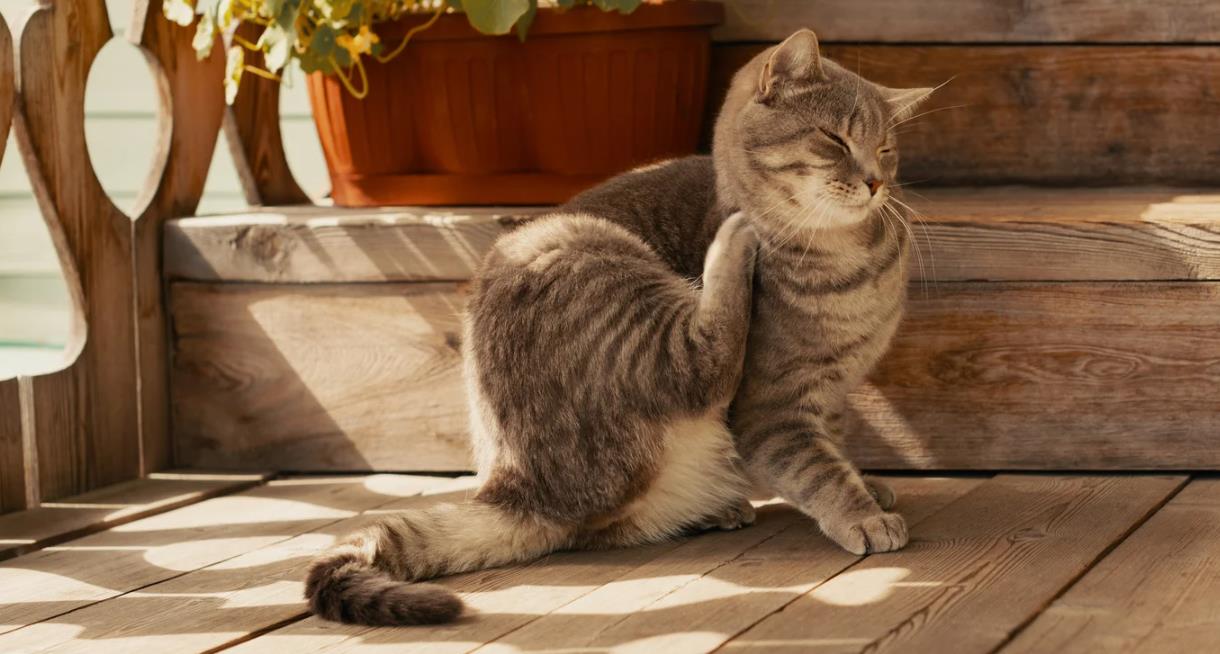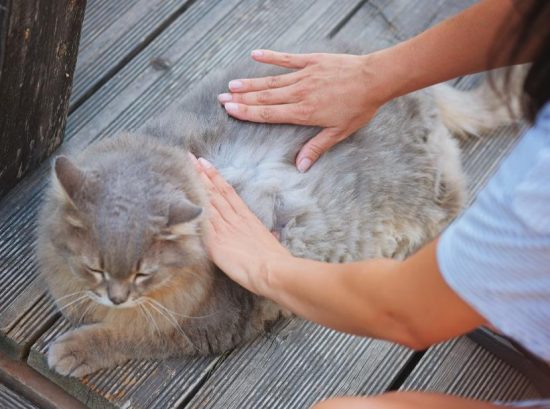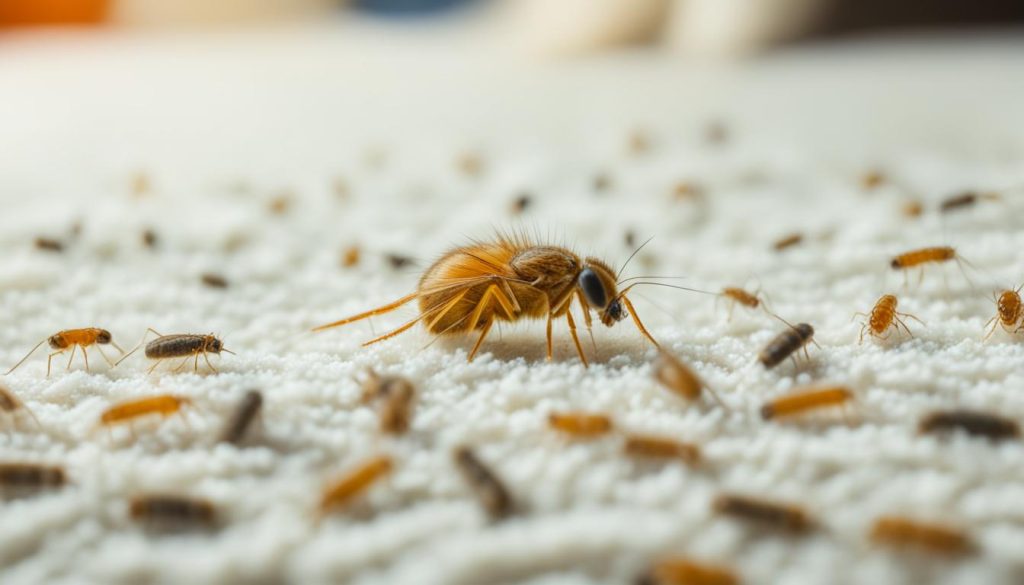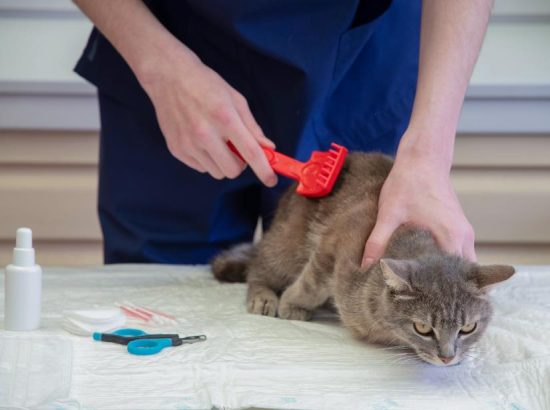How Does an Indoor Cat Get Fleas? Reasons Explained
Discover the surprising ways your indoor cat can get fleases and what steps you can take to protect them. Learn the signs and prevention tips.

Prepare to be surprised: indoor cats are not immune to fleas! Contrary to popular belief, keeping your feline friend indoors does not guarantee a flea-free existence. In fact, there are multiple ways indoor cats can come into contact with these pesky parasites, even without venturing outside.
So, how does an indoor cat get fleas? Let’s explore the surprising reasons behind this common dilemma and uncover the truth about flea infestations in indoor cats. While your indoor environment may seem pristine, your cat can still be exposed to fleas through various means. One of the most common ways is through contact with other pets, such as dogs, that go outdoors and may inadvertently bring back fleas into the house.
But it’s not just other pets that can introduce fleas to your indoor cat. Humans can unknowingly carry fleas on their clothing or shoes, giving these tiny pests a free ticket into your home. Additionally, rodents can be carriers of fleas, and if they find their way inside, your cat may become their unfortunate target.
Visiting external environments, such as catteries, shelters, vet offices, and boarding facilities, can expose your indoor cat to fleas. These places can harbor fleas from other animals, putting your feline companion at risk. So, don’t be fooled into thinking your indoor cat is safe from fleas. Understanding how indoor cats can get fleas is crucial in taking effective preventive measures to protect your furry friend.
Stay tuned as we delve deeper into the factors that contribute to flea survival indoors, the role of other household pets and humans in flea transference, and the hidden risks in external environments. By the end, you’ll be armed with the knowledge to keep your indoor cat flea-free.
Understanding How Fleas Infest Indoor Spaces

Fleas, despite their size, possess remarkable resilience and adaptability that allows them to infest indoor spaces with ease. To effectively combat these persistent parasites, it is important to comprehend the factors contributing to their survival indoors and their surprising ability to thrive in domestic environments.
Factors That Contribute to Flea Survival Indoors
Several factors play a role in the survival of fleas within indoor spaces. These factors include:
- Fleas thrive in warm temperatures, typically between 70 and 85 degrees Fahrenheit (21 and 29 degrees Celsius). Indoor environments often provide the ideal climate for flea reproduction and growth.
- Pets, particularly cats and dogs, serve as hosts for fleas. When infested pets are present in indoor spaces, fleas have a continuous food source and can reproduce rapidly.
- Fleas are prolific breeders and can lay hundreds of eggs within a short period of time. These eggs can easily become hidden in carpets, furniture, and cracks in floors, creating a constant source of new fleas.
The Surprising Resilience of Fleas in Domestic Environments
Fleas have developed remarkable survival mechanisms that enable them to thrive in domestic environments despite efforts to eliminate them. These adaptations include:
- Fleas’ flattened bodies allow them to easily navigate carpets, furniture, and crevices, making detecting and eliminating them challenging.
- Fleas can survive in all life stages – eggs, larvae, pupae, and adults. This means that even if adult fleas are eliminated, there may still be eggs or immature stages present that can develop into new fleas.
- Some fleas have developed resistance to certain pesticides, making them more challenging to eradicate. This resistance underscores the need for a comprehensive approach to flea control that includes multiple treatment methods.
Given the resilience and adaptability of fleas in domestic environments, proactive measures must be taken to prevent and address flea infestations. Regular flea control and prevention efforts, including thorough cleaning, grooming, and the use of appropriate flea treatments for pets, are vital in ensuring a flea-free home.
How Does an Indoor Cat Get Fleas?
Indoor cats can get fleas through various means. One common way is through contact with other pets, such as dogs, that go outdoors and may bring fleas into the house. Fleas can also hitch a ride on humans and their clothing or shoes, allowing them to enter the home. Additionally, rodents can bring fleas into the house, and cats may also be exposed to fleas in places like catteries, shelters, vet offices, and boarding facilities. It is important for cat owners to be vigilant and take preventive measures to protect their indoor cats from fleas.

| Common Ways Indoor Cats Get Fleas |
|---|
| Contact with outdoor pets |
| Hitching a ride on humans |
| Infestation from rodents |
| Exposure in catteries, shelters, vet offices, and boarding facilities |
Additional Household Pets as Flea Carriers
When it comes to flea infestations in indoor cats, it’s not just the cats themselves that can be a source of fleas. Other household pets, particularly dogs, can inadvertently bring fleas into the house, exposing indoor cats to these pesky parasites.
Dogs and Other Pets as Inadvertent Flea Conduits
Even if your dog is on flea prevention, it may not repel all fleas, and there can still be live fleas on your dog’s fur. This means that fleas can easily transfer from the dog to the cat before the flea preventative takes effect.
It’s important to understand that even if your dog doesn’t have visible signs of fleas, they can still be carriers. Fleas are tiny and agile, making them difficult to spot on your pets.
Additionally, other pets in the household, such as rabbits, guinea pigs, or small rodents, can also inadvertently bring fleas indoors. These pets may come into contact with fleas in outdoor environments or through other means, and the fleas can then infest your indoor cat.
Canine Flea Prevention and Its Impact on Your Cat
Preventing flea infestations in indoor cats requires a comprehensive approach that includes protecting not just the cats but also the other pets in the household, especially dogs. It’s crucial to ensure that all pets in the household are on year-round flea prevention.
Consult with your veterinarian to determine the most suitable flea prevention method for your pets. There are various veterinary-approved flea preventatives available, including topical treatments and oral medications. These preventative measures can help repel and kill fleas, reducing the risk of infestations in both dogs and cats.
Human Interactions and the Spread of Fleas
When it comes to the spread of fleas, humans play a significant role that is often overlooked. We can unknowingly transport fleas by carrying them on our clothing or shoes. These pesky parasites have the ability to hitch a ride on us and find their way into our homes. Visitors, especially those with pets, can also unknowingly transfer fleas to indoor cats during their visits.
To reduce the risk of flea transference from humans to cats, practicing good hygiene and cleanliness is essential. Regularly cleaning floors, sheets, furniture, and other areas where fleas may hide can help prevent flea infestations in indoor cats. By maintaining a clean environment, you can minimize the chances of fleas finding a suitable habitat and breeding ground.
Prevention: Protecting Your Indoor Cat from Fleas

Prevention is key when it comes to protecting your indoor cat from fleas. It is recommended to implement year-round flea prevention measures, regardless of whether your cat goes outdoors or not. There are several veterinary-approved flea preventatives available, including topical treatments and oral medications, that can effectively safeguard your cat against fleas.
Consulting with a veterinarian is essential to determine the most suitable flea prevention method for your indoor cat. Factors such as age, weight, and lifestyle should be considered to ensure the chosen method is safe and effective. Your veterinarian can provide personalized recommendations and guidance to help you make the best decision for your beloved feline.
In addition to flea preventatives, regular grooming is crucial in preventing flea infestations in indoor cats. Take the time to comb through your cat’s fur regularly, checking for fleas and other parasites. If any fleas are found, appropriate treatment should be administered promptly to ensure the wellbeing of your cat.
Keeping your environment clean is also vital in the fight against fleas. Vacuuming carpets, rugs, and furniture frequently can help remove flea eggs, larvae, and adult fleas from your home. Washing bedding and cushions regularly, along with ensuring a clutter-free living area, can further reduce the risk of flea infestations in your indoor space.
FAQs on how does an indoor cat get fleas
Is it common for indoor cats to get fleas?
While keeping cats indoors can protect them from getting lost or injured, it does not guarantee that they won’t be exposed to fleas. Indoor cats can still come into contact with fleas through various means, making flea infestations a possibility.
Do I need to treat my house if my cat has fleas?
Yes, if your cat has fleas, it is important to treat your house as well. Fleas can hide in carpets, furniture, and cracks in floors, making it necessary to eliminate them from the environment in order to fully eradicate the infestation.
Can my cat have fleas if I don’t see them?
Yes, it is possible for your cat to have fleas even if you don’t see them. Fleas are small and can be difficult to detect, especially in the early stages of an infestation. Regular flea prevention and monitoring are important to ensure your cat stays flea-free.
Can I still touch my cat if it has fleas?
Yes, you can still touch your cat if it has fleas. However, it is important to take precautions to avoid flea bites and prevent the infestation from spreading. Regular grooming and flea treatment can help keep both you and your cat safe.
Can a cat ever be flea-free?
While it is possible to treat and prevent flea infestations in cats effectively, it can be challenging to completely eliminate fleas from the environment. Regular flea prevention measures, such as year-round treatment, grooming, and environmental control, are necessary to keep your cat as flea-free as possible.





